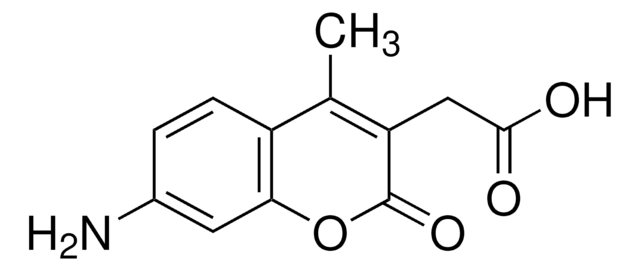235199
7-Methoxycoumarin-4-acetic acid
97%
Synonym(s):
7-Methoxy-2-oxo-2H-1-benzopyran-4-acetic acid
About This Item
Recommended Products
Assay
97%
mp
193 °C (dec.) (lit.)
solubility
DMF: soluble 50 mg/mL, clear, colorless to yellow
SMILES string
COc1ccc2C(CC(O)=O)=CC(=O)Oc2c1
InChI
1S/C12H10O5/c1-16-8-2-3-9-7(4-11(13)14)5-12(15)17-10(9)6-8/h2-3,5-6H,4H2,1H3,(H,13,14)
InChI key
ZEKAXIFHLIITGV-UHFFFAOYSA-N
Looking for similar products? Visit Product Comparison Guide
Application
- as fluorescent probe in preparation of two novel LysB29 selectively labelled fluorescent derivatives of human insulin
- in the preparation of cell-penetrating peptide transportan 10 (tp10)
- as fluorescent label for peptides
Storage Class Code
11 - Combustible Solids
WGK
WGK 3
Personal Protective Equipment
Certificates of Analysis (COA)
Search for Certificates of Analysis (COA) by entering the products Lot/Batch Number. Lot and Batch Numbers can be found on a product’s label following the words ‘Lot’ or ‘Batch’.
Already Own This Product?
Find documentation for the products that you have recently purchased in the Document Library.
Customers Also Viewed
Our team of scientists has experience in all areas of research including Life Science, Material Science, Chemical Synthesis, Chromatography, Analytical and many others.
Contact Technical Service










